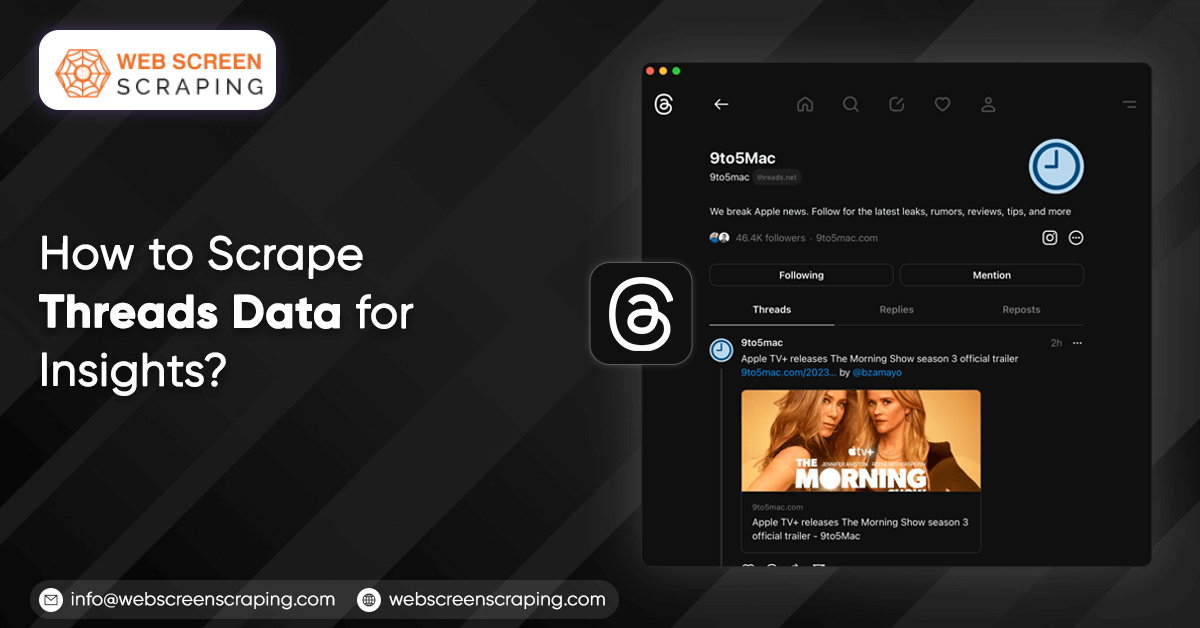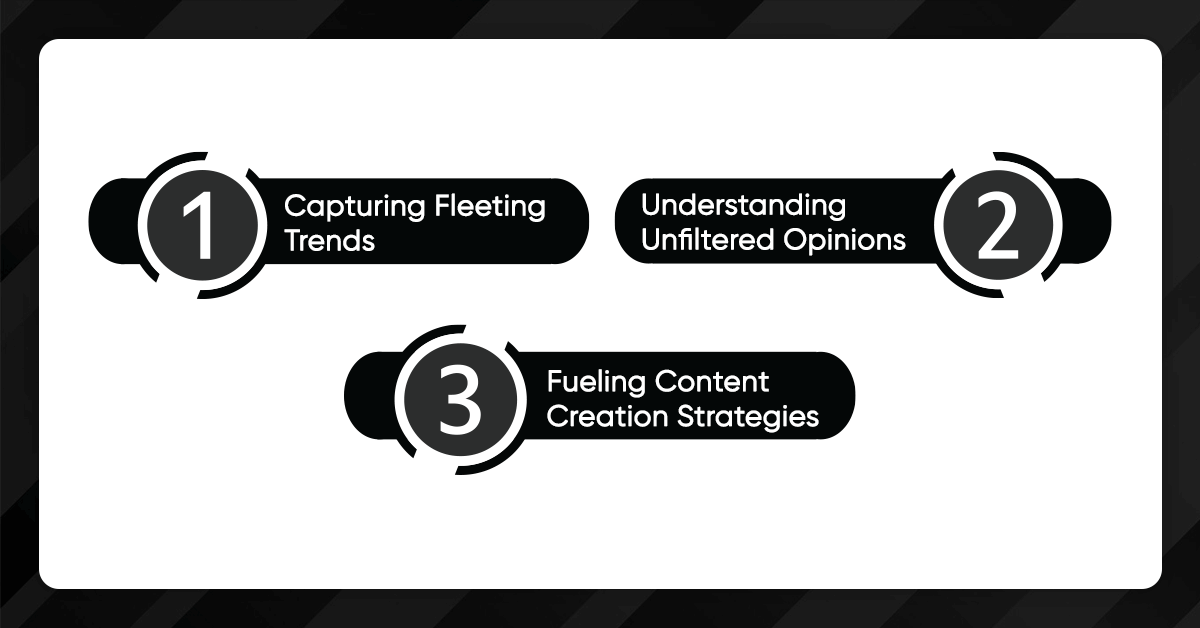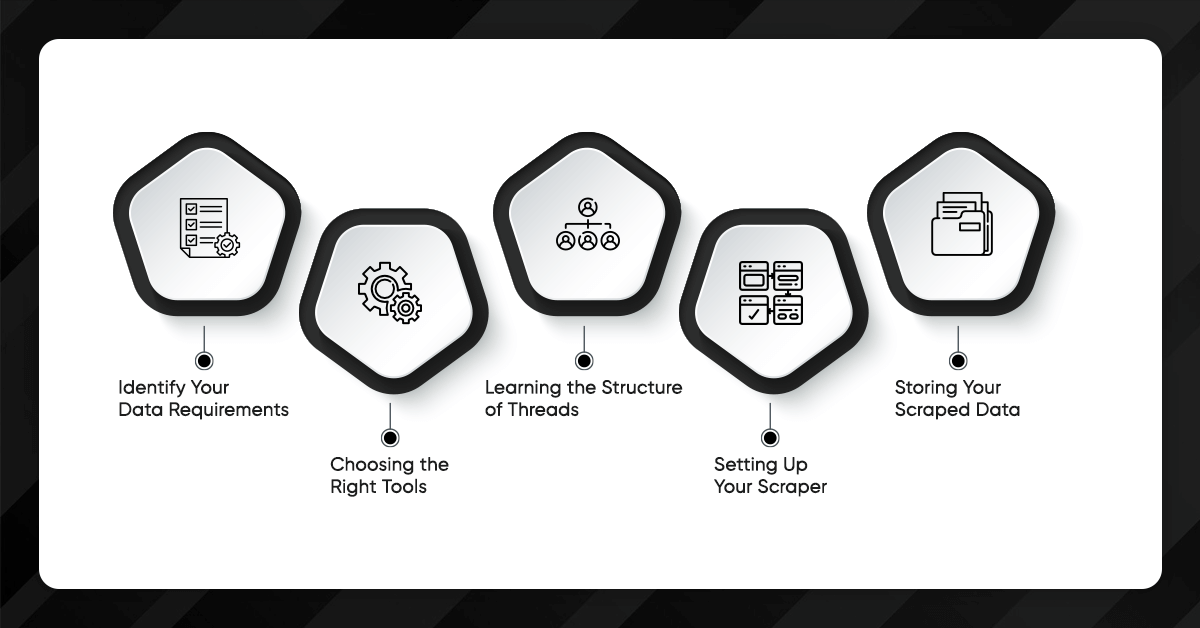
In today's digital world, the voices echoing online forums and discussions are more influential than ever. Platforms like Threads are woven with opinions, conversations, insights, and experiences for data enthusiasts, researchers and analysts. But how do we collect and make the best use of this data available before it disappears? That's when scraping helps. Scraping Threads can not only navigate you through the valuable user-generated content. Still, they can also be the treasure you might be looking for to bolster customer understanding and spark innovative ideas. In this blog, let's explore how to extract valuable insights from Threads and how to put the data to better use while considering ethical practices.
What is Threads and Scraping in the context of Threads?
Threads, created by Meta (formerly Facebook), is a social networking platform focused on fleeting photo and video sharing. Users close to each other on Instagram can create "threads" – temporary group chats where the content disappears after 24 hours or upon exiting the chat. This impermanent nature adds a layer of intrigue and authenticity to interactions.
Scraping, in the context of social media, refers to extracting data from a platform. Thread scraping involves collecting publicly available information from the app, such as Usernames, Captions, Comments, and Engagement Metrics.
Why Scrape Threads Data?

Threads is about sharing short-lived posts with close friends, giving us a unique look at trends and how users act. Let's explore why collecting data from Threads can be useful:
Capturing Fleeting Trends
Unlike public posts on platforms like Instagram, Thread's content disappears after 24 hours. This can be particularly valuable for:
Identifying Emerging Trends
Unearthing trending topics, hashtags, and visual styles before they explode into the mainstream.
Analyzing Real-Time Sentiment
Getting a clear view of what people think and feel about events or issues as they happen, providing important insights instantly.
Understanding Unfiltered Opinions
Threads foster a more candid environment with its disappearing content and close friend circles. You can understand the honest opinions and talks happening in tight-knit groups by collecting public information like captions and comments. This can be particularly useful for:
Market Research
Understanding how close friends talk about brands, products, or services can provide valuable insights into real-world user preferences and pain points.
Social Listening
Identifying emerging trends or concerns related to specific topics, events, or social issues can help organizations stay ahead of the curve and effectively address public sentiment.
Fueling Content Creation Strategies
Knowing what your audience likes is key to making interesting content. Collecting data from Threads lets you see what kinds of posts, pictures, and topics get the most attention in close friend groups. This information can guide you in making content your audience will enjoy, even beyond the Threads app.
How to Scrape Threads?

Before we dive into the how-to, we must understand the legal and ethical considerations of scraping. You must always comply with the Terms of Service (ToS) of the website you're scraping. Many sites explicitly prohibit scraping in their ToS, and scraping such sites without permission may subject you to legal action.
Also, consider the ethical implications – you should respect users' privacy and not misuse the data. Always aim for anonymized data that removes personal indicators whenever possible.
Identify Your Data Requirements
First, be clear on what information you need. Is it the thread text, user interactions, timestamps, or maybe the number of views and replies? The more specific you are, the more effective your scraping operation will be.
Choosing the Right Tools
Next, you need to equip yourself with the right tools. There are numerous web scraping tools and libraries available, such as:
BeautifulSoup and Requests for Python
Great for beginners and perfect for static content, but might stumble on JavaScript-heavy sites.
Scrapy
An open-source and collaborative framework for extracting the data you need from websites. It's built on Twisted, an asynchronous networking framework, which means it can handle larger amounts of data and more complex scraping tasks.
Selenium
Ideal for dynamic content that requires interacting with the web page, like clicking buttons to load more thread content.
Puppeteer or Playwright
Headless browsers that can control web pages with a JavaScript API, perfect for scraping single-page applications.
Learning the Structure of Threads
Threads are typically structured in a nested manner. There may be a main post followed by replies, each with its own sub-replies. Understanding this structure is essential to ensuring your scraper navigates the thread accurately.
Setting Up Your Scraper
Use the inspect tool in your browser to understand the page's HTML structure. Write the code and run the scraper to collect the data. Ensure you include error handling and respect the site's robots.txt and rate limiting to avoid blocking your IP.
Storing Your Scraped Data
It's good practice to store data in a structured format as you scrape it. For simpler needs, a JSON or CSV file might suffice.
Approaches to Scrape Threads data
There are multiple approaches to scraping Threads data, each with its own advantages and limitations
Manual Scraping
This is the simplest form, where you manually visit forums or Threads and copy-paste the needed information. While straightforward, it's time-consuming and not efficient for large-scale data collection.
Using APIs
Many platforms offer Application Programming Interfaces (APIs) that allow you to access and collect data legally in a structured manner. Using an API facilitates gathering large amounts of data while respecting the platform's data use policies.
Web Scraping Tools
There are numerous web scraping tools and software available that can automate the data collection process. These tools navigate websites, extract specified data, and store it for further analysis. Some popular tools include Beautiful Soup (for Python users), Scrapy, and Octoparse.
Custom Web Scrapers
Developing custom web scrapers using programming languages like Python is a viable approach for more specific needs or for gathering data from platforms without an API. This involves writing scripts that send requests to the website, parse the HTML content, and extract the desired information.
Browser Extensions
Browser extensions designed for scraping data from web pages with minimal effort exist. These extensions can be particularly useful for quick, one-off scraping tasks or when dealing with a small volume of data.
Outsourcing to Scraping Services
If you lack the technical skills or resources, outsourcing data collection to a specialized scraping service is an option. Many companies offer tailored services to scrape and deliver data according to your specifications.
Considerations for Ethical Scraping
Respect robots.txt
This specifies the areas that should not be scraped. Respecting these rules is crucial for ethical scraping.
Rate Limiting
Implement delays between your scraping requests to avoid overwhelming the server.
User Privacy
Be mindful of personal data and comply with regulations like GDPR or CCPA to protect user privacy.
Terms of Service
Adhere to the website's terms of service, which often include clauses about data scraping.
Conclusion
Scraping Threads data can provide valuable insights into user behaviour, trends, and opinions. However, your chosen approach should balance your data needs, technical capabilities, and ethical considerations. Whether through APIs, web scraping tools, or custom scripts, data scraping, when done responsibly, can be a powerful tool for research, marketing, and strategic decision-making.
Scraping service providers like Web Screen Scraping transform the extracted data into actionable insights. We offer custom data analysis solutions and scraping services to businesses of all sizes. Using the latest technologies and the expertise of our team, we provide well-structured data from the source.

